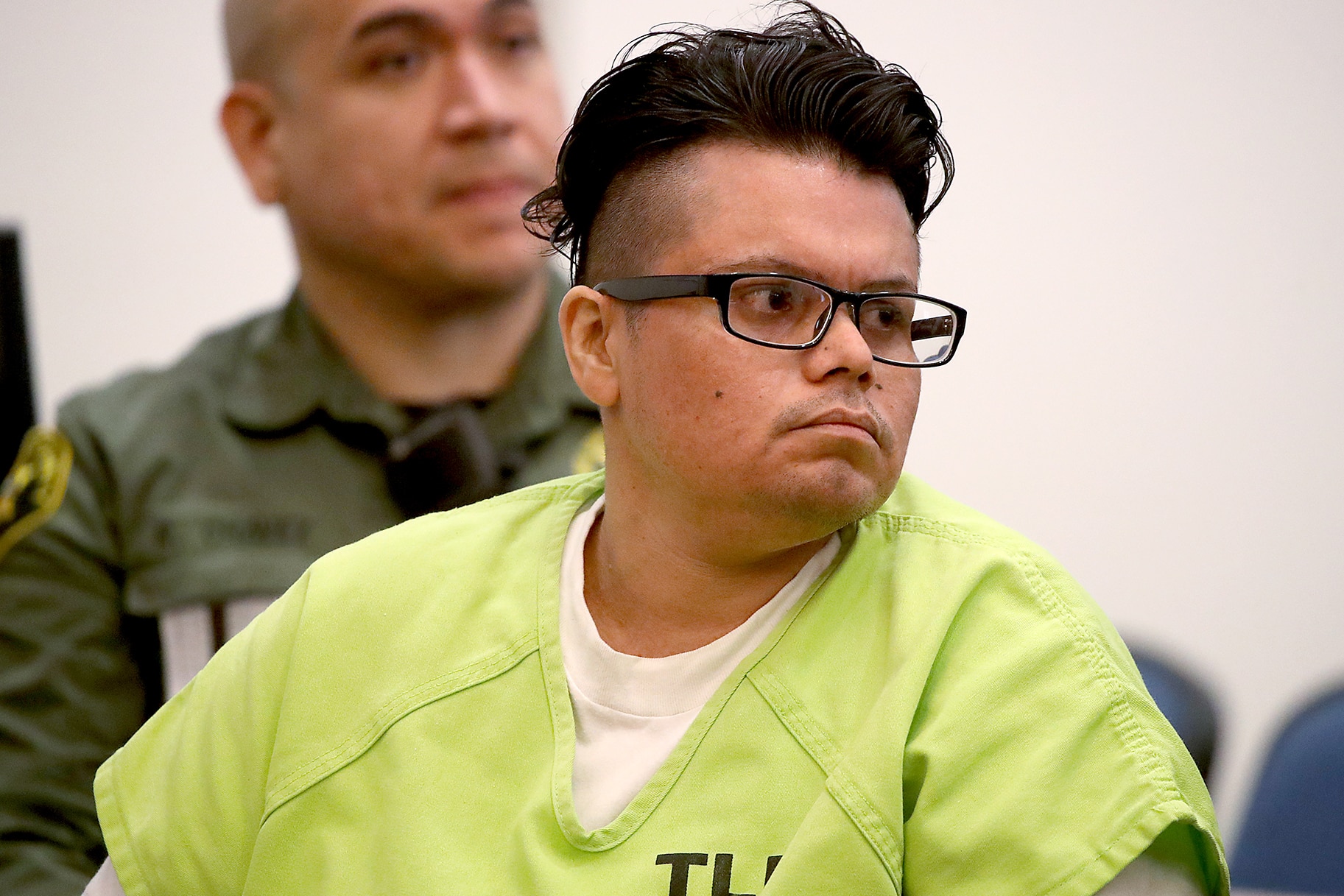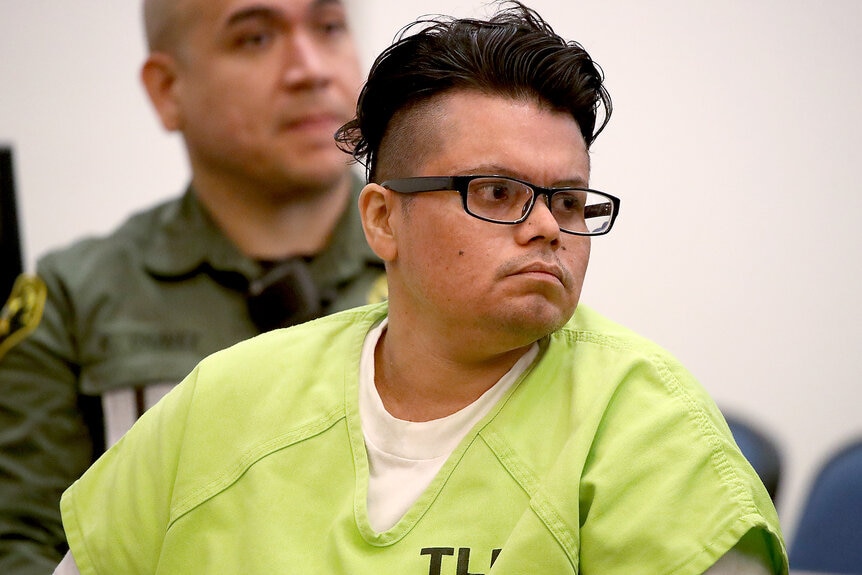Create a free profile to get unlimited access to exclusive videos, breaking news, sweepstakes, and more!
"What Do You Feel Like Today?" Serial Killers Trolled California Streets Together for Next Victim
Steven Gordon and Franc Cano could still be out on the hunt if it wasn't for one determined investigator, Detective Julissa Trapp.

Most angels don’t carry firearms, but for the mothers of the victims of a pair of heinous serial killers, this one did.
“To me, she’s an angel in disguise,” Priscilla Vargas told Dateline: Unforgettable of Anaheim Police Detective Julissa Trapp. “An angel that carries a badge and a gun.”
It was Trapp’s dedication to the victims, even when it seemed there were few clues to go on, that helped bring the cold-blooded killers to justice and ended their reign of terror on some of the Anaheim and Santa Ana area’s most vulnerable women.
“ThIs is a tough story. A true contest between good and evil,” Keith Morrison said. “Why did I just have to tell the story you’re about to see? Because at its heart it’s about the question of who matters in this world and about a kind of guardian angel who knew the answer.”
How Serial Killers Steven Gordon and Franc Cano Were Caught
The investigation began the morning of March 14, 2014 when an attendant sorting through trash just picked up from dumpsters across Anaheim noticed what looked like a human foot on the conveyor belt.
“Only her feet were exposed and initially the workers there thought it was a mannequin,” Trapp said.
The body had been wrapped in a blue plastic tarp and thrown away in a dumpster to be forgotten. The only clue police had to the woman’s identity was a tattoo on her neck that said the name “Jodi.”
RELATED: Was Tracey Roberts a Heroic Mom Who Saved Her Kids From Intruders or a Cold-Blooded Killer?
Using Anaheim Police’s database of tattoos, they were able to identify the victim as 21-year-old Jarrae Estepp, a small-town girl from Oklahoma who had fallen into prostitution through her boyfriend and started working Anaheim’s Beach Boulevard along with other sex workers.
“A lot of them came from good stable families, they just happened to run into the wrong guy who somehow got them into the job,” Trapp explained. “I mean, these pimps are really good about breaking down the women and getting control over them.”
The tattoo had been in honor of her mother, Jodi, who described her daughter before her death as happy and outgoing.
Detectives discovered the motel room where Estepp had been staying and found $700, contact solution, and her ID, but nothing that would point toward her killer.
Without much to go on, Trapp remembered a recent news story about three missing sex workers in the nearby city of Santa Ana and began to wonder if the cases could be connected.
There was 20-year-old Kianna Jackson, who vanished five months earlier and had once loved softball, her younger brother, and the family’s dog.
Her mother, Kathy Menzies, said that when Jackson got into high school she fell in with a bad crowd and later moved to Las Vegas. Kathy had no idea her daughter had turned to sex work, even though they talked on the phone nearly every day. She thought her daughter was in Santa Ana to visit friends.
“I didn’t think anything bad was happening,” Kathy said.
When Jackson stopped responding to her mother in October 2013, Kathy was worried and reported her missing, but authorities told her there wasn’t much they could do.
Two and a half weeks later, Josephine “Monique” Vargas disappeared. Her mom, Priscilla, described her as having a “beautiful personality.”
“They used to call her Giggles because she always made people laugh,” she remembered.
Monique disappeared after leaving a family BBQ, telling her family she was just walking to get groceries.
Then there was Martha Anaya, a 28-year-old mother herself, who vanished without telling her worried family anything about where she was going.
For Trapp, who often relies on her strong Catholic faith, the women’s disappearances continued to gnaw at her. She bought a rosary to represent each woman, just like she does for all her victims, and prayed for answers.
RELATED: Who Really Killed Teresa Halbach? Dateline Dives into the Controversial Steven Avery Case
Months into the investigation, Trapp decided to try a desperate “Hail Mary” and asked a fellow investigator to see whether the computer database that tracks the movements of sex offenders on parole through their GPS ankle monitors picked up anyone in the same area where Estepp had placed her final phone call.
Amazingly, it did. Franc Cano, who was out on parole after pleading guilty for committing a lewd act on a minor, was in the same area as that final phone call and was also linked to the dumpster where investigators knew Estepp had been left.
It turned out he wasn’t alone. Cano was with his close friend, Steven Gordon, a man on parole with convictions for molesting a minor and kidnapping. Data showed both men had also been at the last known locations of the other victims. The only exception was that no GPS data linked Gordon to Anaya’s last location, but he also wasn’t wearing a GPS device at the time.
Trapp set up surveillance of the duo, got wiretaps, and poured through their cell phone records. She discovered some disturbing banter between the men.
“Well, we started reading the text messages and started seeing how prolific they were at hunting,” she said. “Hunting on almost a daily basis and how nonchalant they were about it. It was almost like ordering take out when you start reading, ‘What do you feel like today? Asian or Mexican?’”
RELATED: Graduate Student's Fatal Shooting Reveals A Secret Affair, But Who Is The Killer?
Gordon and Cano referred to their victims as “cats” making comments, according to Trapp, like, “Be careful — when a cat knows it isn’t getting away, it’s gonna fight.”
When the wiretap picked up the men’s plans to get out of town, Trapp knew it was time to move in and make the arrests.
Cano immediately asked for a lawyer, but Gordon sat down in the interview room with Trapp.
The seasoned detective used her compassion as a secret weapon. She gave Gordon a blanket so he could warm up, shared two meals with him, and put her innate kindness on full display.
As they sat together, Gordon eventually began to open up, sharing how he and Cano would pick up the women, bring them back to the auto shop where he worked, each have their way with the victim, and then kill her before putting her body in a nearby dumpster.
He also made another chilling revelation. There was one victim police had never discovered.
“He looks at me and he goes, ‘You’re missing one’, which caught me off guard and I tried not to show too much emotion,” Trapp recalled.
The only detail Gordon remembered about the victim was that she told the men she was from Compton.
Trapp was eventually able to identify the victim as Sable Alexandria Pickett.
The arrests and eventual convictions of both men brought the victims’ mothers some measure of peace, but Estepp is the only victim whose body has ever been recovered.
The rest of the women are believed to be buried somewhere in an Orange County landfill.
As Trapp looked out onto the sea of garbage while the Dateline cameras rolled, she quietly told the women they deserved something more.
”It’s hard to look at that and know that’s where you ended up but I know you guys are all in a better place and I know that you’re together and you’re helping each other,” she said. “You can rest now.”





























